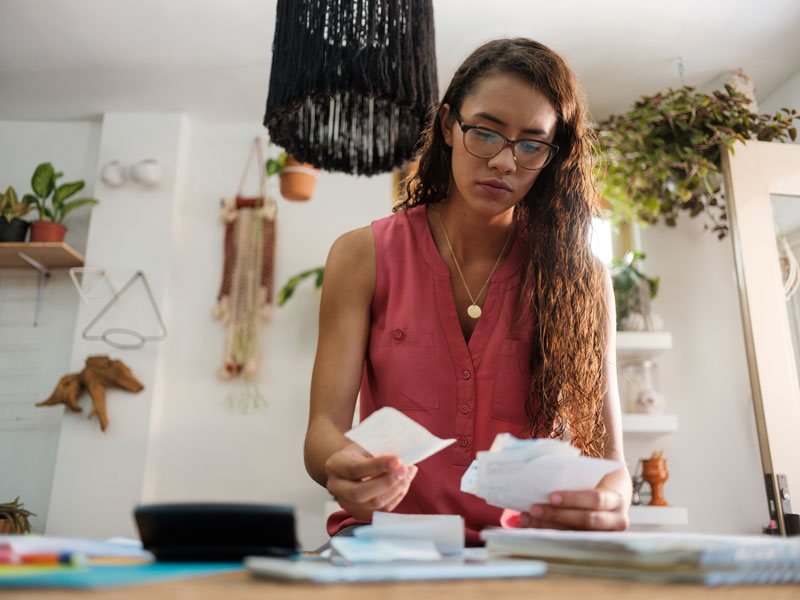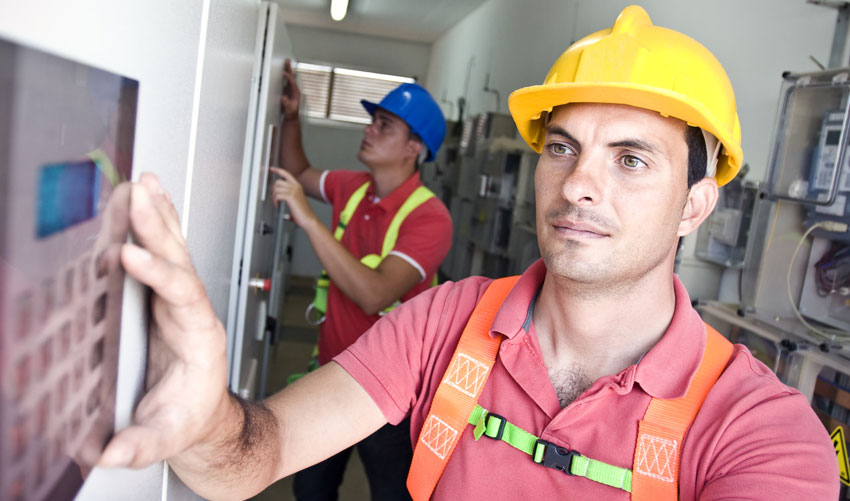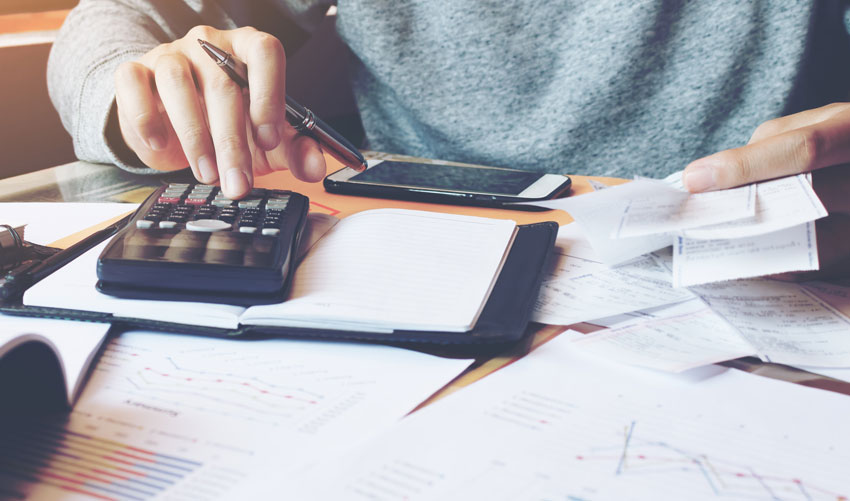People decide to switch to solar panels for a whole slew of different reasons. But, one of the most common reasons is to consistently save some money on their energy bill each year. It’s also more environmentally friendly and can even allow you to sever your reliance on the electricity grid.
When deciding if solar is worth it for you, you’ve probably asked yourself a few questions such as how much will you exactly save? How does it stack up against other energy sources? Is the initial investment worth it in the long run? Well, the answer to these questions depends entirely on your specific circumstances so let’s take a look at how you can figure out how much you can save by switching to solar.
As of today, the average electricity rate in the United States is $0.1284 per kilowatt-hour. The average American home will use over 900 kilowatt-hours in a single month. Let’s do some math: 900 kilowatt-hours multiplied by the average electricity rate and you’ll be spending $115.56 a month. Now take that and multiply it by 12 (months in one year) and you get close to $1400 a year. If you were to install solar panels that provided the equivalent in kilowatts to what you use every month for electricity, you’ll be looking at saving that same amount every single year. So what would you do with an extra $1400 per year? Aside from installing solar panels in your home, that money could go towards even more improvements for your home. Not to mention, installing solar also increases the value of your home. In the event of when you’ll be selling it, you’ll be able to close the deal at a much higher price point.
Is It True That You’ll Be Saving A Lot Of Money?
The short answer: yes. You’ll be saving money every single year by using solar power. It also helps you by turning a variable cost that changes each month into a fixed monthly cost. This means that using more electricity will not cost you more money so long as your solar panels supply enough power for that additional electricity usage.
Not only that, but the amount of money that you save will depend on where you live. Let’s take a look at how much you stand to save if you were to use solar panels in certain cities and metropolitan areas (with some examples):
- If you live in the Phoenix, Arizona area (where there is plenty of sun) you can stand to save more than $32,000 over the course of 25 years. The annual output of electricity from an average solar panel system is nearly 9300 kilowatt-hours.
- If you live in New York City (where things can be expensive), you’ll still be able to save a reasonable amount of money each year on electricity. If you use solar power, you can save yourself upwards of $1000 a year. It may seem like a paltry amount, but a little can sure be a lot in a pricey city like The Big Apple.
Are Solar Saving Estimates Reliable?
Solar power is a long term investment. For most circumstances, they provide an excellent return on investment over the course of their effective lifespan. However, keep in mind that these are estimates that can change over time. You may save more than you expected (or even less). No one will know for sure and that’s what makes these estimates a little difficult to calculate.
Regardless of how the actual savings stack up versus forecasted estimates, one thing is for certain: you are still saving money that would have otherwise gone to the electric company. Think about it, you are still saving money that can go towards other expenses. Saving a little bit less than expected is still a lot better than saving nothing at all.
What Factors Can Affect The Estimates You Initially Received?
As mentioned before, the estimates and savings forecasts can, and will change over time, making calculations a lot more difficult. Of course, accuracy matters when it comes to creating estimates, especially when it comes to a large financial estimate like solar panels. So, let’s take a closer look as to what in particular can cause your estimates to become inaccurate.
Since solar panels are a long-term investment, the calculations used to determine how much you will save from solar panels rely on economic trends that can drastically change. Essentially, the cost of electricity can significantly change 5, 10, or even 25 years from the present day, making the impact of your solar savings a fluctuating thing. Even determining the economic value of a consistent good 25 years from now can be very difficult to predict. However, it’s important to get these forecasts as close to accurate as possible so potential customers are made aware of what they can potentially save when switching to solar power.
It’s also important to note what can also go on behind the scenes in terms of what our own government is doing. For example, the United States had imposed a tariff on China that is slated to stay in effect until February 2022. Initially, the tariff was 30% with a 5% decrease each year until the expiration date. This will no doubt cause an impact on the price of solar panels and the money that you could save by switching to solar.
Because of the tariff, the increase in kilowatt usage has increased. With the tariff at its current rate, you will still be able to get a good sum of money for using solar energy due to the tax credit. However, there is a caveat: when the tariff drops down to its next 5 percent, the tax credit will decrease as well. In other words, the sooner you get in on solar energy the better the chance you’ll be able to get a tax credit.
What Should You Do Now?
If you are considering the idea of switching to solar power, it’s important to take some necessary steps that will help you determine how much you could save. You’ll need to take some time, weigh some pros and cons, and make some careful consideration before making any decision on whether solar is right for you. Here are a few things that we suggest you do that can help determine how much you can save with solar:
- Look Through Your Electric Bills
If you have them on file, gather your electric bills from the previous year. Then you’ll need to crunch some numbers. First, how much money did you spend in the previous year? Second, look at how much electricity you used on average (we’ll discuss this later.) The higher your electricity bill, the more potential you have for saving by switching to solar. One caveat to note is that your electricity rates and the usage will fluctuate month after month. You may be using less electricity in one month and a lot more the next. That fluctuation can affect your overall savings.
Also, take into account your location. One large city could have a different rate compared to another. You can save more money living in Phoenix compared to New York City. That’s because they have different annual electrical outputs and different rates.

- Take A Look At How Much Sun You Get
We’re not kidding when we say that location should be taken into consideration. While you don’t need to be a professional meteorologist, it’s important to note how much sun you get on average per year. States like Arizona and Florida will get more sun compared to other states in the country. It’s also a good idea to observe your home’s rooftop and it’s orientation with the sun. - Get an Estimate of How Much Installing Solar Will Cost You
One of the largest expenses that you’ll spend on solar energy will be two things: the panels themselves and the initial installation. Other than that, it’s pretty easy and straightforward from there. It’s important to get a good idea of what you’ll be saving both in the short and the long-term. Remember, there is little to no maintenance needed for these solar panels, and even better, they will last you a good 20 to 25 years. So you won’t need to take into account any maintenance fees, which would be minimal at best.
You’ll want to consider how much electricity you are using on a regular basis. That’s why we suggest gathering your bills in the first step. You should add up the total of electricity you’ve used in the last year, divide by 12 and you get your average. With that out of the way, you’ll now be able to determine which system you can choose since it will output about the same amount of electricity every year.
There are plenty of calculators online that will help you crunch those numbers so the task itself isn’t too complicated. But to give you a ballpark estimate, installing a 5 KW residential solar panel system in your home will cost anywhere between $3 to $5 a watt to install. That’s anywhere between $15,000 to $25,000. Keep in mind that these figures do not include the tax credits and incentives you might receive for using solar power that will reduce these costs. - See If You Qualify For Incentives
If you use solar power, you may be eligible for incentives. For example, you can claim a tax incentive for the cost of having your solar panels installed. Currently, it’s at 26%. But it is slated to be decreased to 21% next year. Thus, it’s a good time to install solar panels now rather than wait until later and miss out. This will greatly knock off a bunch of money on your tax bill. In fact, it might just take care of your tax bill altogether (depending on how much you make).
You may also be eligible for additional credits. But it depends on several factors, your location for one example. Some localities allow their residents to even make money off of their solar power by selling the excess electricity they generate to electric companies. If that isn’t impressive in terms of your personal finances, we don’t know what is. - Contact Your Nearest Solar Power Provider
Once you have made the determination that solar power will benefit you in the long run, it’s time to contact your nearest solar panel provider. The sooner you get it done, the better off you’ll be. Especially when the 26 percent tax credit is still in full effect. The five percent decrease will make quite a big difference so why wait?
It’s also important to shop around when choosing your solar installer. You may have multiple solar panel providers in your nearby area. But it’s important to see what’s available to you. One provider will have fairly different rates and install costs compared to a competitor that might be located 100 miles away from them.
You can outright purchase solar panels or have the option to lease them. Given these options, you can take into consideration the financial implications for either option and choose the one that will best suit you financially. Though leasing them can be less costly, you may miss out on some of the long-term financial opportunities, such as the tax incentives. One important benefit of buying solar panels outright is that those panels increase the value of your home, where leasing them will not.
Watch The Savings Roll In
Once you are able to get the solar panels installed on your home, the savings will roll in sooner or later. Not just the short-term savings, but also the long-term savings as well. Think about it: saving thousands of dollars per year and having a smaller tax bill in the process. A lot of your fellow Americans would love nothing more than to have more money in their pockets and less to pay to Uncle Sam.
Solar energy is one of the most reliable alternatives to electricity that you can find. And it will certainly give you a better financial future. If you are planning to sell your home at some point, it will also give you more confidence in what you’ll be getting once the sale is all said and done.
While the new homeowners enjoy their new home complete with a very low energy bill, you’ll have more money in your pocket that will go towards a new home or something completely different. If you are interested in having solar panels installed in your home, check out what you are able to get in terms of benefits in your local area.




